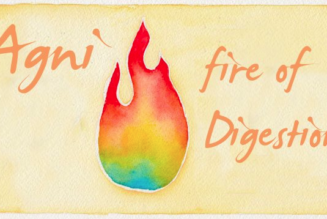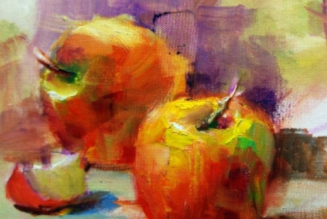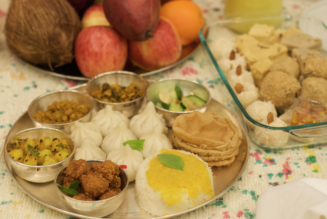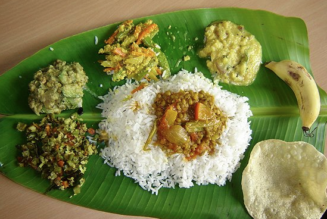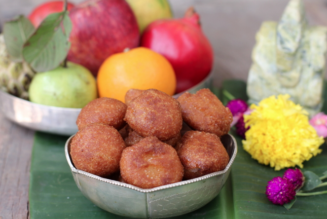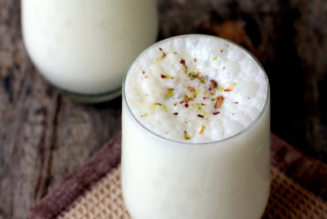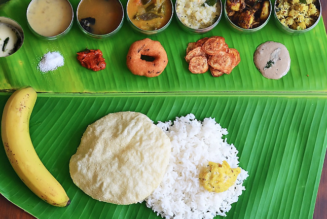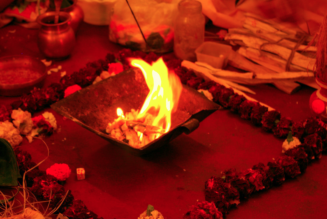Fasting Therapy ~ An Ayurvedic Perspective
The word fasting though denotes complete abstinence from food, Ayurveda does not advocate complete abstinence in general with certain exceptions to the rule as in the case of post-shodhana therapy. At one instance Chakrapani in his commentary states the following as the meaning of “upavasa” – उपवास:
क्रोधादिपरित्यागः सत्याद्युपादानं च, वचनं हि– “उपावृत्तस्य पापेभ्यः सहवासो गुणे हि यः|उपवासः स विज्ञेयोन शरीरस्य शोषणम्” इति; || १. दीर्घञ्जीवितीयोऽध्यायः ६||
This echoes the disassociation of the krodha [anger], lobha [greed], moha [illusion], iccha [desire], dvesha [hatred] etc. from the mind and following truth is “upavasa”. By doing so, one negates his sinful activities. However, for that to happen a well fed physique will not cooperate, and instead a poorly fed physique is considered more suitable. A physique devoid of food gets to an extent tired and the outward thinking centered on one’s negative emotional thoughts like krodha [i.e. anger] gets diverted as the focus of attention runs towards the appetite; thereby relieving one from both his physical and mental stress!
PRACTICAL ASPECT OF FASTING:
That being a spiritual explanation, now coming to the Ayurvedic perspective. “Upavasa” [i.e. langhana] gets defined as यत् किञ्चिल्लाघवकरं देहे तल्लङ्घनं स्मृतम्. In essence, “that which causes lightness to the physique is Langhanam”. Now divulging into the qualities of Langhanam includes that which is light for digestion; sharp in potency; dry, rough & hard in consistency; subtle in its form; and is moving with relation to its kinetics [1] While in commentary of the above verse, Chakrapani says that which causes dryness to the body is essentially absent of the oily quality and devoid of heaviness is to be considered langhana. [2]
INDICATIONS:
Upavasa is one amongst the 4 types of modalities of Langhana followed in ayurveda.The other 3 being pipAsA (thirst); marutAtapa (exposure to breeze); pAcana (digestive compounds).[3]
Who should consider langhanam [i.e. fasting]?
1. aggravated combination of kapha, pitta, rakta and mala associated with vata
2. one with high tolerance or extreme physical strength
In these two contexts Langhana (i.e. fasting) follow-up Shodhana is advised. The pAcana type of Langhanam has its jurisdiction over persons with moderate strength; kapha & pittaja diseases; nausea; vomiting; diarrhea; cardiac patients; visUcika; alasaka; fever; constipation; heaviness of the body & body parts; and the of appetite. In addition, individuals with poor physical strength and mild diseases; not feeling thirsty, etc. then upavAsa (easily digesting foods) are advocated. [4]
Benefits of langhana [i.e. fasting] [5]:
– brings about lightness to the body
– enhances unhindered elimination of flatus; urine and feces
– belching devoid of odor and taste of previous meal
– wards off the stupor & debility
Last but not least, the condition for which the langhana management addressed … soon becomes asymptomatic.
Adverse effects of excessive indulgence in Langhana: [6]
When indulged in excess the langhana certainly gets harmful and causes the following conditions. Suppression of hunger; thirst resulting in loss of appetite. Debilitated functioning of hearing and visual apparatuses. Confusion of mind (stupor) due to the vata moving upwards and getting stagnated in the precordial region. Exhaustion of physical strength; agni & bala (contextually refers to the mucosal lining). Pain in parvas (small joints like carpals; tarsals; metacarpals and metatarsals). Malaise. Cough. Dryness in oral cavity.
DISCLAIMER:
This is for educational purposes only; NOT Medical advice.
Always consult your primary care physician before considering any new management.
Always consult with a professional ayurvedic provider before considering any new management
References:
[1] लघूष्णतीक्ष्णविशदं रूक्षं सूक्ष्मं खरं सरम्||कठिनं चैव यद्द्रव्यं प्रायस्तल्लङ्घनं स्मृतम्|
[2] विरूक्षणस्य हि मुख्यः स्नेहाभावः साध्यः, लङ्घनस्य तु गौरवाभाव इति स्फुट एव भेदः प्रतिभाति ||
[3] चतुष्प्रकारा संशुद्धिः पिपासा मारुतातपौ| पाचनान्युपवासश्च व्यायामश्चेति लङ्घनम्||१८||
[4] प्रभूतश्लेष्मपित्तास्रमलाः संसृष्टमारुताः| बृहच्छरीरा बलिनो लङ्घनीया विशुद्धिभिः||१९||
येषां मध्यबला रोगाः कफपित्तसमुत्थिताः| वम्यतीसारहृद्रोगविसूच्यलसकज्वराः||२०|| विबन्धगौरवोद्गारहृल्लासारोचकादयः| पाचनैस्तान् भिषक् प्राज्ञः प्रायेणादावुपाचरेत्||२१||
[5] वातमूत्रपुरीषाणां विसर्गे गात्रलाघवे| हृदयोद्गारकण्ठास्यशुद्धौ तन्द्राक्लमे गते||३४||
स्वेदे जाते रुचौ चैव क्षुत्पिपासासहोदये| कृतं लङ्घनमादेश्यं निर्व्यथे चान्तरात्मनि||३५||
[6] क्षुत्प्रणाशोऽरुचिस्तृष्णा दौर्बल्यं श्रोत्रनेत्रयोः||३६|| मनसःसम्भ्रमोऽभीक्ष्णमूर्ध्ववातस्तमो हृदि|
देहाग्निबलनाशश्च लङ्घनेऽतिकृते भवेत्||३७|| पर्वभेदोऽङ्गमर्दश्च कासः शोषो मुखस्य च|

